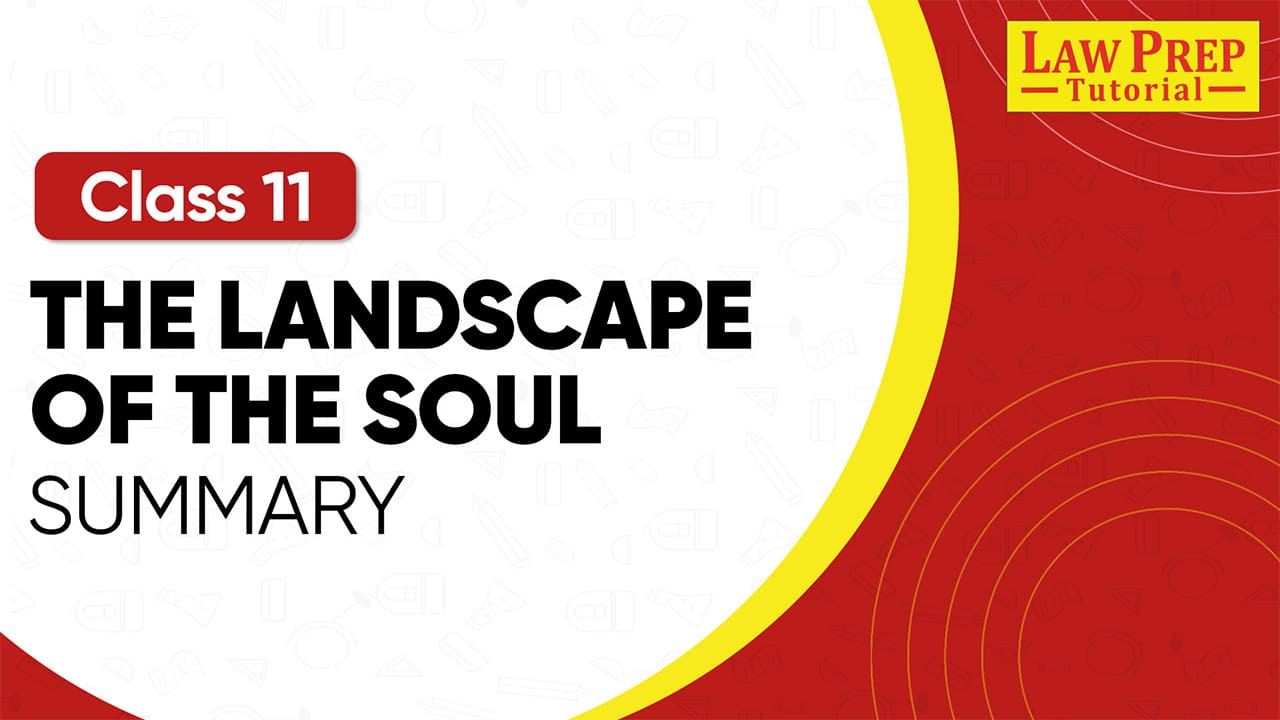If you are searching for the summary of The Landscape of the Soul, you’ll get the complete explanation here in simple words. Landscape of the Soul by Nathalie Trouveroy explores the difference between European and Chinese art traditions.
Through stories and examples, it highlights how Western art focuses on realistic representation, while Chinese art emphasizes the inner spirit and imagination.
The Landscape of the Soul Summary
Landscape of the Soul by Nathalie Trouveroy is a thought-provoking piece that explores the differences between European and Chinese art traditions, while also showing how art reflects deeper philosophies of life.
The chapter begins with a story about a Chinese painter, Wu Daozi, who was commissioned by an emperor to paint a landscape. Wu painted mountains, rivers, forests, and even caves. But he also painted a hidden path that led deep into the mountains. When the emperor admired the painting, Wu clapped his hands, the door in the painting opened, and Wu walked into the landscape, never to return. This story reflects the Chinese belief that art is not just about outward appearance but about capturing the spirit and soul of the world.
The author contrasts this with European art, where the main focus has traditionally been on realism—creating an exact, lifelike image of what the eye sees. In the West, painters worked on techniques like perspective and proportion to bring depth and accuracy into their works. For Europeans, the purpose of art was to present a faithful representation of reality.
In Chinese tradition, however, the role of art is very different. A painting is not meant to be a mirror of the outer world but a reflection of the artist’s inner spirit and emotions. The painter invites the viewer into the painting, encouraging imagination and personal interpretation. The Chinese approach suggests that art is a dialogue between the artist and the viewer, allowing both to enter a spiritual journey.
The chapter also touches on the concept of Daoism, which emphasizes harmony between humans and nature. According to this belief, art should not dominate or replicate nature but should reveal its hidden essence. Thus, Chinese art becomes a path to self-discovery and deeper understanding of life.
Through these comparisons, the author shows that while European art values technical skill and realism, Chinese art values imagination, spirituality, and the soul. Both traditions highlight different aspects of human creativity, and together they show that art is more than just what meets the eye, it is also about meaning, spirit, and inner truth.
Short Summary of Landscape of the Soul
Landscape of the Soul by Nathalie Trouveroy compares European and Chinese traditions of art, highlighting how they reflect different worldviews. The chapter opens with a story about a Chinese painter, Wu Daozi, who created a magnificent landscape for the emperor. Within the painting, he showed a hidden path leading inside the mountains. To the emperor’s surprise, Wu stepped into the painting and disappeared, symbolizing how Chinese art goes beyond appearances to capture the inner essence of nature and life.
In contrast, European art emphasizes realism, perspective, and lifelike accuracy, focusing on faithfully representing what the eye can see. Chinese art, however, invites viewers into the painting, encouraging imagination, interpretation, and a spiritual journey. It reflects the Daoist belief in harmony between humans and nature.
Through this contrast, the chapter shows that art is not only about physical beauty but also about meaning, spirit, and discovering the soul.
Character/Subject Sketch: Landscape of the Soul
| Character/Subject | Traits/Role | Details in the Chapter |
| Wu Daozi (Chinese Painter) | Spiritual, imaginative, mystical | Painted landscapes with hidden paths; walked into his painting, symbolizing art as a spiritual journey. |
| The Emperor | Practical, materialistic, admirer of beauty | Commissioned Wu’s painting but failed to understand its deeper meaning beyond outward beauty. |
| Chinese Artists | Focused on inner essence, philosophy, imagination | Believed painting should capture the soul and spirit of nature, not just physical appearance. |
| European Artists | Realistic, technical, detail-oriented | Focused on perspective, proportion, and lifelike accuracy to mirror the real world. |
| Daoist Philosophy | Spiritual, harmonious, balanced | Emphasized harmony between humans and nature; art as a path to discover truth and the soul. |
More Important Resources for CBSE Exam:
| Class 11th Hornbill Syllabus | CBSE Class 11th Commerce Subjects |
| CBSE Full Form | All about CBSE Class 11th |
| Class 11th Syllabus | Class 12th Syllabus |
| Class 11th Commerce Books | CBSE Board: All details |
Theme of The Landscape of the Soul
1. Two Traditions of Art:
Contrast between European realism and Chinese spiritual imagination.
2. Art Beyond Appearance:
Art as a way to capture the inner essence, not just the outer form.
3. Imagination and Spirituality:
Chinese art invites viewers to interpret and journey within.
4. Philosophy of Daoism:
Harmony between humans and nature reflected in art.
5. Perspective of Reality:
Western focus on technique versus Eastern focus on meaning.
6. Art as Self-Discovery:
A medium to understand life and the soul.
Find detailed questions and answers from all chapters of English Class 11 now:
Lessons from The Landscape of the Soul
1. Look Beyond Appearances:
True beauty lies in essence, not just form.
2. Imagination Matters:
Creativity enriches understanding of the world.
3. Respect Nature:
Art teaches harmony between humans and the environment.
4. Different Perspectives Add Value:
Both Eastern and Western art offer unique insights.
5. Art as a Path to the Soul:
Creativity leads to self-discovery and inner peace.
Read the chapter-wise summaries of Class 11 English here:
FAQs Landscape of the Soul
The chapter is written by Nathalie Trouveroy, a French writer and scholar of art.
It tells the story of Wu Daozi, a Chinese painter who disappeared into his painting, symbolizing art as a spiritual journey.
European art is realistic, focusing on perspective, depth, and lifelike representation of the outer world.
Chinese art emphasizes imagination and invites the viewer to enter the painting, discovering its inner meaning.
Chinese art is linked to Daoism, which stresses harmony between humans and nature.
He admired its outer beauty but failed to recognize its deeper, spiritual meaning.
It symbolizes that true art is not about copying reality but about creating new worlds of imagination.
It means that a landscape is not just physical but also a reflection of the inner self and the soul.
Check the latest CBSE Class 11 syllabus for all subjects below:
Explore the updated CBSE Class 12 syllabus for all subjects here:
Discover CLAT exam resources that can help you get started early:
Explore CLAT coaching centers across different cities:

